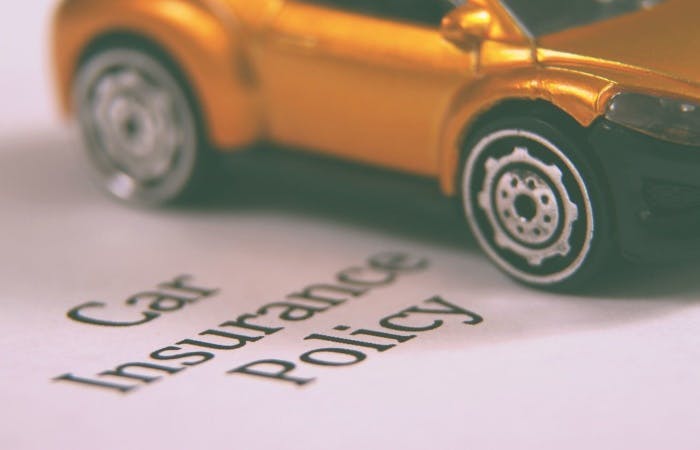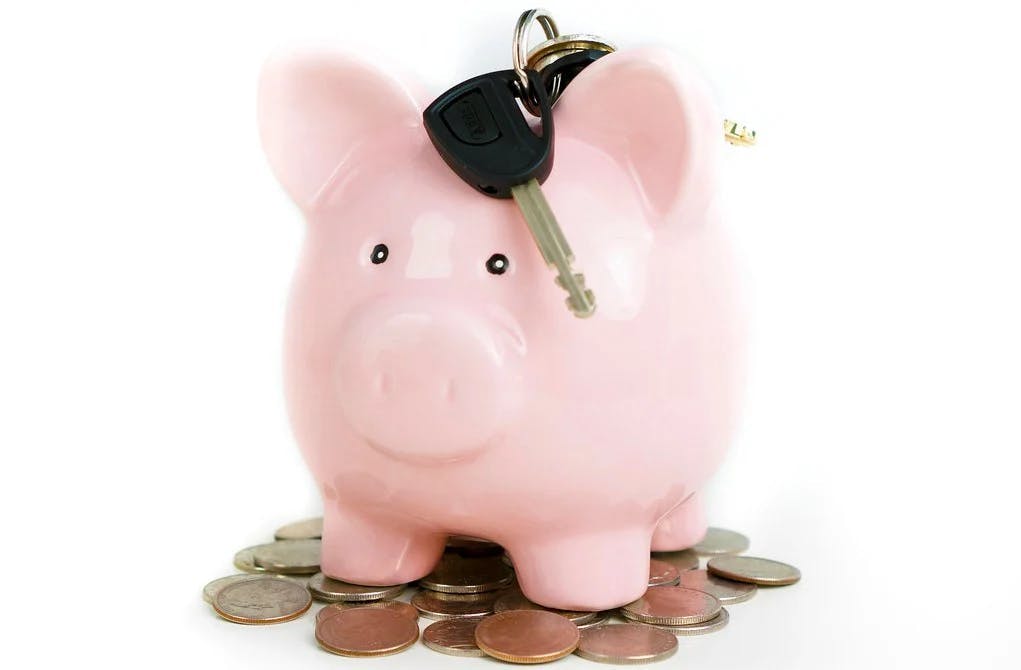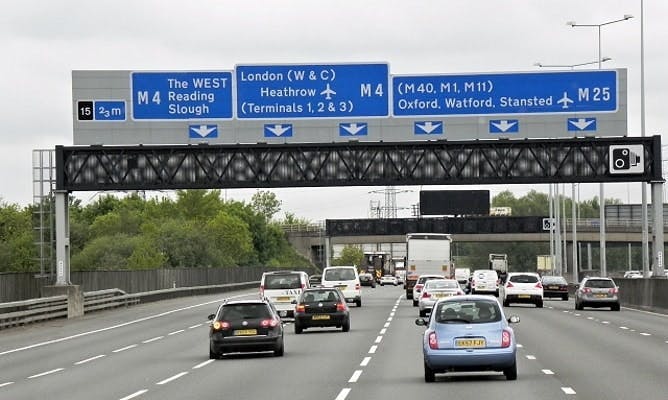
It's the moment every learner dreams of: passing your driving test. Few things in life quite match the elation you feel on hearing those magic words. But what happens next? After passing, this isn't always clear.
The reality, though, is that what drivers go through after passing is just as varied as their journeys to getting their licence. There are, however, some common threads—as well as a few pointers on what (not) to do. So, if you're in the happy position of having just passed, read on to preview your next steps!
Getting your full driving licence
First things first, you'll want to swap your old green provisional licence for a shiny, new, pink one. There are two ways you can go about this process:
- When you pass, your examiner will ask if you would like to receive your full driving licence automatically. If you choose to do this, you'll have to hand your provisional licence over there and then.
- If you don't wish to get your licence automatically, you can instead apply for your full licence by post. You can find details on how to do this on the DVSA website. Just remember that you must apply within two years of passing your driving test. Fail to do so, and you'll have to take your test all over again!
Once you've applied, you should receive your full licence within three weeks. Don't worry about the wait, though—you can legally drive independently as soon as you've passed your driving test.
All of this means that you're free to hit the road straight from the test centre! However, there are some good reasons why you may want to give it a miss. Firstly, you're likely to be in a bit of a post-test high—this is your moment, so take the chance to celebrate and let it all sink in! Secondly (and more pressingly), the learner driver insurance you had before may no longer cover you. You're not a learner anymore, after all! This means it's time to arrange new insurance.
Getting insurance

Once the issue of getting home after your test is behind you, your future of driving lies ahead. Some learners may be lucky enough to already have a car—you might even have taken your test in your own car! Others, meanwhile, may be in the market for a motor. No matter which camp you fall into, it's a good idea to start checking out your insurance options.
If you were already insured on a private vehicle while learning, transferring to a regular policy may be as simple as a phone call to your insurer. This, however, depends on you choosing to stay with the same company, which is far from a given!
This is where research comes into play. Almost all of us will be familiar with where to look for quotes; your price comparison site of choice is a good starting point. However, knowing what to look out for is a different kettle of fish entirely. Luckily, we have a few handy hints for those with and sans vehicle:
- Premiums are higher for newer drivers than for those with more experience. If you happen to be under 25, the price is even steeper. You can't control for this factor—but you can control for other insurance risk factors.
- Paying a voluntary excess can help lower the cost of your premium. Remember, though, that if you do need to make a claim, you'll need to pay a greater share of the costs from your own pocket.
- Add a second driver to your policy—but ensure that they're low-risk!
- You can also benefit from named driver no-claims discount by getting your name put on someone else's policy. Make sure, however, that they have a good driving record and are over 25.
- If you haven't yet purchased a car, look for a model in a low insurance group. Cars with powerful engines and customisations are a particular no-no!
- Check if your potential insurer charges interest on monthly instalments—and steer clear if they do.
- Consider telematics (or ‘black box’) insurance, which tracks your driving habits over a year. Not only does this option offer discounted premiums, but drivers who score well can see big discounts upon renewal.
- Don't fall victim to fake insurers—always make sure they are authorised and regulated by the FCA.
For further insurance tips for young drivers, check out the Money Advice Service.
Buying a car

Passed your driving test, but don't yet have a set of wheels? This should be the next item on your agenda! Choosing a car as a new driver can be a tricky endeavour, but there are certain things to look out for.
The first ties in with our previous topic: insurance. Drivers hoping to lower their premiums (most of us, then!) will want to look for car in one of the lower insurance groups. These groups range from 1 to 50, with a higher number typically meaning more expensive insurance.
You'll also need to take road tax into consideration. Though the old paper tax discs are a thing of the past, the tax itself is very much a going concern. Standard road tax rates for all petrol or diesel cars are £140 per year. Meanwhile, alternative cars cost £130 in tax, while electric cars are tax-free.
When you first register a new car, however, you'll pay rates relating to its CO2 emissions. These range from nothing for cars with zero emissions through to an eye-watering £2,070for cars which emit over 255 g/km of CO2.
When it comes to the engine, smaller sizes are often better for new drivers—especially if you're using your car primarily for short city journeys. What you put into that engine is a factor, too—but with diesel tax incentives now phased out, petrol is generally the way to go. Then there's the auto vs manual debate, with the former typically being more expensive.
Still need more of a hint? Check out some great first cars for new drivers at Auto Express.
P plates

As a learner, you will have had to display L plates on the front and rear of your vehicle at all times. After passing, this legal requirement no longer applies: feel free to tear up those plates and toss them in the bin!
However, many new drivers decide to swap one set of plates for another: P plates. Unlike L plates, which are obligatory, it's up to the driver to decide whether they wish to display P plates. More confident new drivers may wish to skip them entirely—but there are good reasons why you might want to give them a go.
A key reason is that the L plates you displayed as a learner were an obvious giveaway that you needed a bit more patience from your fellow road users. After passing, you might wish that drivers were still willing to give you a bit of the benefit of the doubt—after all, you'll be driving solo for the first time, and may feel a few jitters!
The only way you can convey this to other drivers is through the use of P plates. It's totally up to you to decide how long you wish to display them for, too. So, if you're already feeling confident after a couple of trips, you can discard them at leisure. On the flip side, if you're still somewhat nervous, you can keep the plates on as long as you like.
Further practice

So, your car (with or without P plates) is parked safely on your driveway, and its insurance and road tax are sorted. Now all you need to do is start driving... right?
Well... perhaps not. Even if you managed the rare feat of passing your test with zero minors, there's still room for improvement. After all, the driving test only lasts around 40 minutes: it can't cover everything!
When most new drivers hit the road, they will have spent much of their time driving around local test routes. This means, in turn, that they'll have little experience with areas such as motorway driving or driving at night.
For this reason, getting extra practice is advisable. A Pass Plus course is a fantastic option for any learners looking to build on their practical test pass with further training in trickier areas. Don't worry—you won't have to pass a test! All you'll need to do is display competence in the following six modules:
- Town driving
- Rural driving
- Driving at night
- All-weather driving
- Driving on dual carriageways
- Driving on motorways
Successful completion of a Pass Plus course will help make you a more well-rounded and skilled driver. Better still, certain insurance companies also offer discounted premiums for those holding a Pass Plus course completion certificate. To find out more, read up on PassMeFast's Pass Plus courses. You can also head to our resources page for comprehensive guides to life before and after the practical test.
Subscribe for driving advice, offers & more
We'd love to let you know about our courses, news and offers via email. You may unsubscribe at any time.
Star Genie Limited trading as PassMeFast. Company number 10093359
Copyright © 2024 owned by Star Genie Limited
PassMeFast, Blue Tower, MediaCityUK, Salford, M50 2ST
